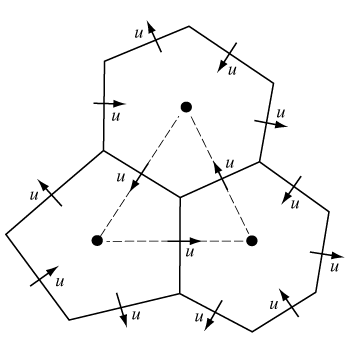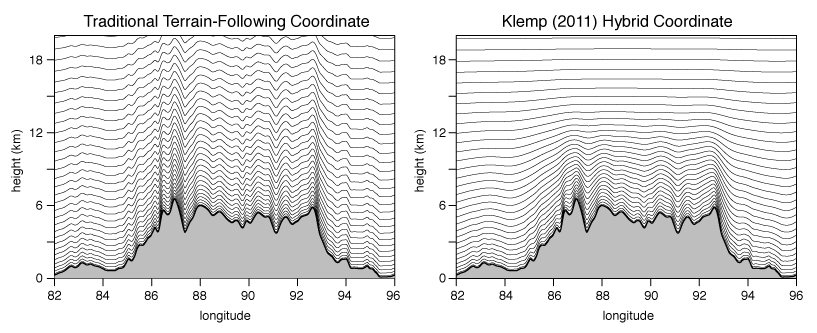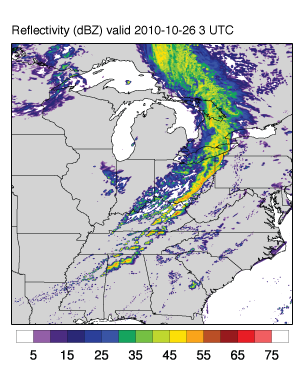The atmospheric component of MPAS, as with all MPAS components, uses an unstructured centroidal Voronoi mesh (grid, or tessellation) and C-grid staggering of the state variables as the basis for the horizontal discretization in the fluid-flow solver. The unstructured variable resolution meshes can be generated having smoothly-varying mesh transitions (see the figure to the right); we believe that this capability will ameliorate many issues associated with the traditional mesh refinement strategy of one-way and two-way grid nesting where the transitions are abrupt. Using the flexibility of the MPAS meshes, we are working towards applications in high-resolution numerical weather prediction (NWP) and regional climate, in addition to global uniform-resolution NWP and climate applications.
The MPAS atmosphere consists of an atmospheric fluid-flow solver (the dynamical core) and a subset of the Advanced Research WRF (ARW) model atmospheric physics. Work is underway to port the MPAS atmospheric dynamical core to the Community Atmosphere Model (CAM) in the Community Earth Systems Model (CESM), which will provide coupling between MPAS Ocean and MPAS Atmosphere and coupling to the CAM physics and other components of the CESM system. Work is also progressing on porting the National Centers for Environmental Prediction (NCEP) Global Forecast System (GFS) atmospheric physics to MPAS.

A variable resolution MPAS Voronoi mesh


